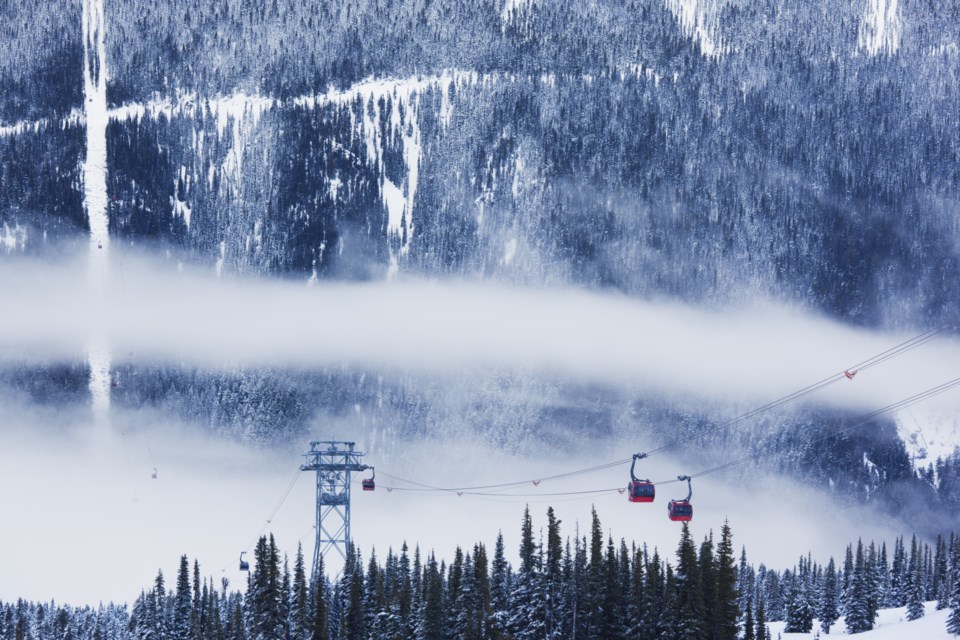Vail Resorts saw pass sales increase by a healthy margin this year, bolstered in part by a drop in price announced at the height of the COVID-19 pandemic.
In its quarterly earnings report released Thursday, Dec. 9, the Broomfield, Colo.-based ski giant and Whistler Blackcomb (WB) parent company said North American pass product sales for this ski season through Dec. 5 had increased 47 per cent in units and 21 per cent in sales dollars compared to the same period last year.
Those figures don’t include a deduction on the value of any redeemed credits provided to pass holders in that period. Once factoring in pass sales from Peak Resorts, the owner of 17 U.S. ski areas that was acquired by Vail Resorts in 2019, pass sales rose a whopping 76 per cent in units and 45 per cent in sales dollars.
"We are very pleased with the results of our season pass sales, which continue to demonstrate the strength of our data analytics capabilities and the compelling value proposition of our pass products, driven in part by the 20-per-cent reduction in pass prices for the 2021/2022 season,” said Vail Resorts CEO Kirsten Lynch in a release.
The company anticipates the total number of guests on all advance commitment products, including in Australia, will exceed 2.1 million this year, an increase of roughly 700,000 from last year and 900,000 from 2019.
This comes despite Vail Resorts’ largest ski area, Whistler Blackcomb, having to cut its ski season short two years in a row due to COVID-19 and as advance lodging bookings at its sole Canadian property continue to lag behind pre-pandemic numbers, “which we anticipate is due to the impact of travel restrictions on international visitors to the resort,” the company said in its earnings report.
Lynch indicated there was strong unit growth from both renewing and first-time pass holders, with the “most significant” growth coming from its destination markets, particularly in the Northeast.
“We have focused on growing our destination pass holder base as we have expanded our network, and over the course of the last two years, we have nearly doubled the number of advance commitment guests from those markets,” she continued. “We significantly outperformed our original expectations for pass sales relative to the estimates we provided when we announced the 20-per-cent price decrease in our passes, which was driven by the significant increase in new pass holders and guests trading up to higher-value passes.”
Vail Resorts’ quarterly financials were less promising, although the company typically operates at a loss in the first fiscal quarter given its North American resorts aren’t usually open yet.
Net loss for the quarter was US$139.3 million, compared to $153.8 million in the same quarter last year. Resort reported EBITDA (Earnings Before Interest, Taxes, Depreciation and Amortization) loss was $108.4 million for the quarter, compared to $94.8 million for Q1 2021.
Total net revenue increased $43.8 million, or 33.2 per cent, to $175.6 million for the three months ended Oct. 31, 2021.
The quarterly report comes on the heels of Vail Resorts announcing Dec. 8 that it had entered into an agreement to purchase Seven Springs Mountain Resort in Pennsylvania. As part of the US$125-million deal, the company will also acquire Hidden Valley Resort, the operations of Laurel Mountain Ski Area, a hotel, conference centre and other related operations. Vail Resorts says Seven Springs will generate incremental annual EBITDA in excess of $15 million and ongoing capital expenditures associated with operations there are forecast at approximately $3 million a year. The deal is expected to close this winter.
Along with its recent acquisitions, Vail Resorts also has big plans on the capital investment front. In September, it announced it would proceed with its 2022 capital investment plan, with between $318 million and $328 million earmarked to “significantly increase lift capacity and enhance the guest experience” across its resorts. That includes replacing WB’s existing six-seat Creekside Gondola with a new high-speed, eight-person gondola, as well as swapping out the quad Big Red Express for a new high-speed, six-person chair. The projects are planned for completion by the 2022-23 winter season.
“We remain dedicated to continuing to improve the guest experience, reduce wait times and communicate transparently with guests, especially given the excitement and demand for travel this coming season,” Lynch said.
In addition to the lift upgrades, Vail Resorts is also planning to invest in “network-wide scalable technology that will enhance our analytics, e-commerce and guest engagement tools to improve our ability to guest outreach, personalize messages and improve conversion.”
The company came under fire in Whistler last year after complaints over long wait times to reach Guest Services and confusion over redeeming pass credits after the shortened 2019-20 ski season.
As of Oct. 31, Vail Resorts had $1.5 billion of cash on hand and $636.2 million of availability under its U.S. and WB revolving credit facilities.
For the full earnings report, visit investors.vailresorts.com.




